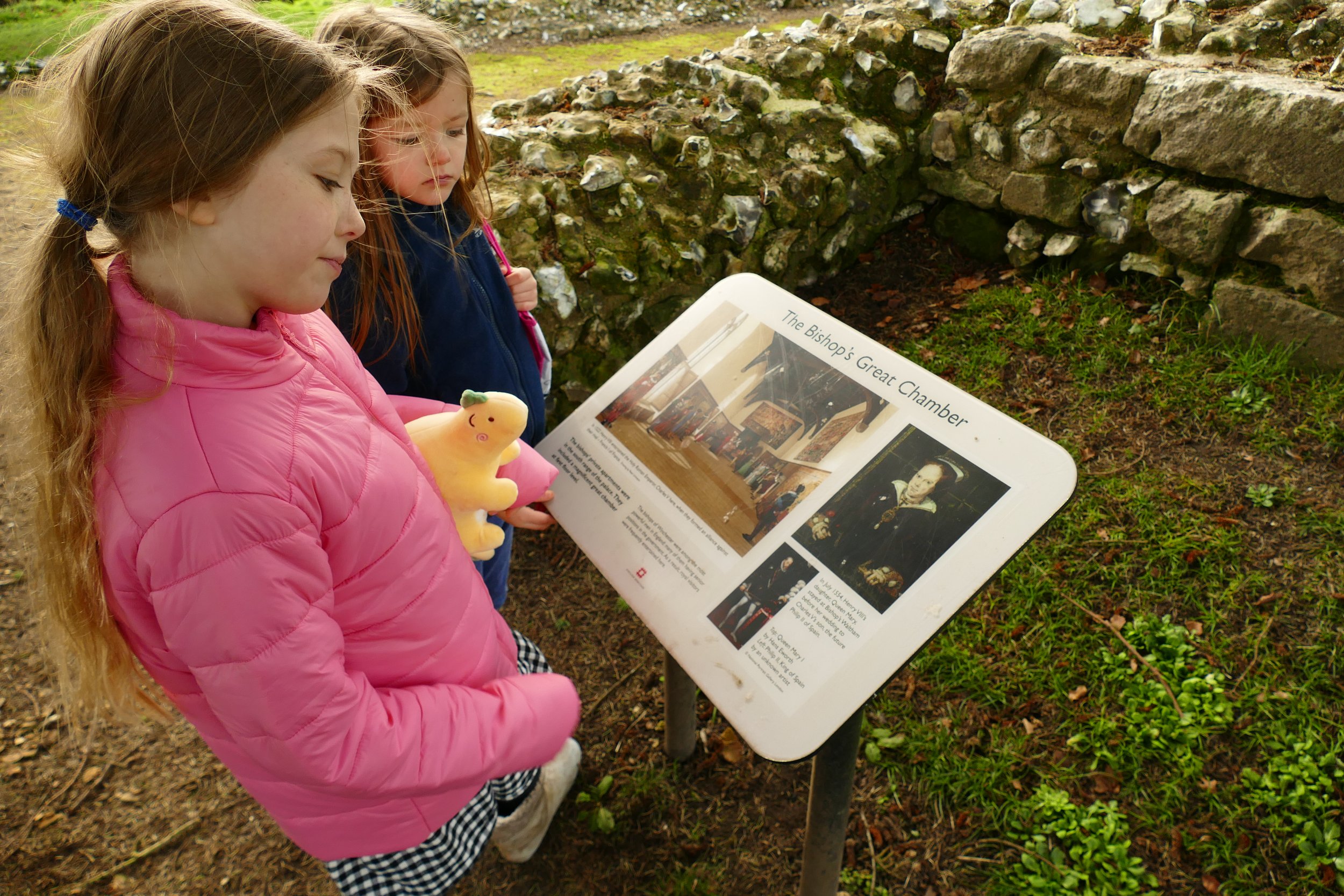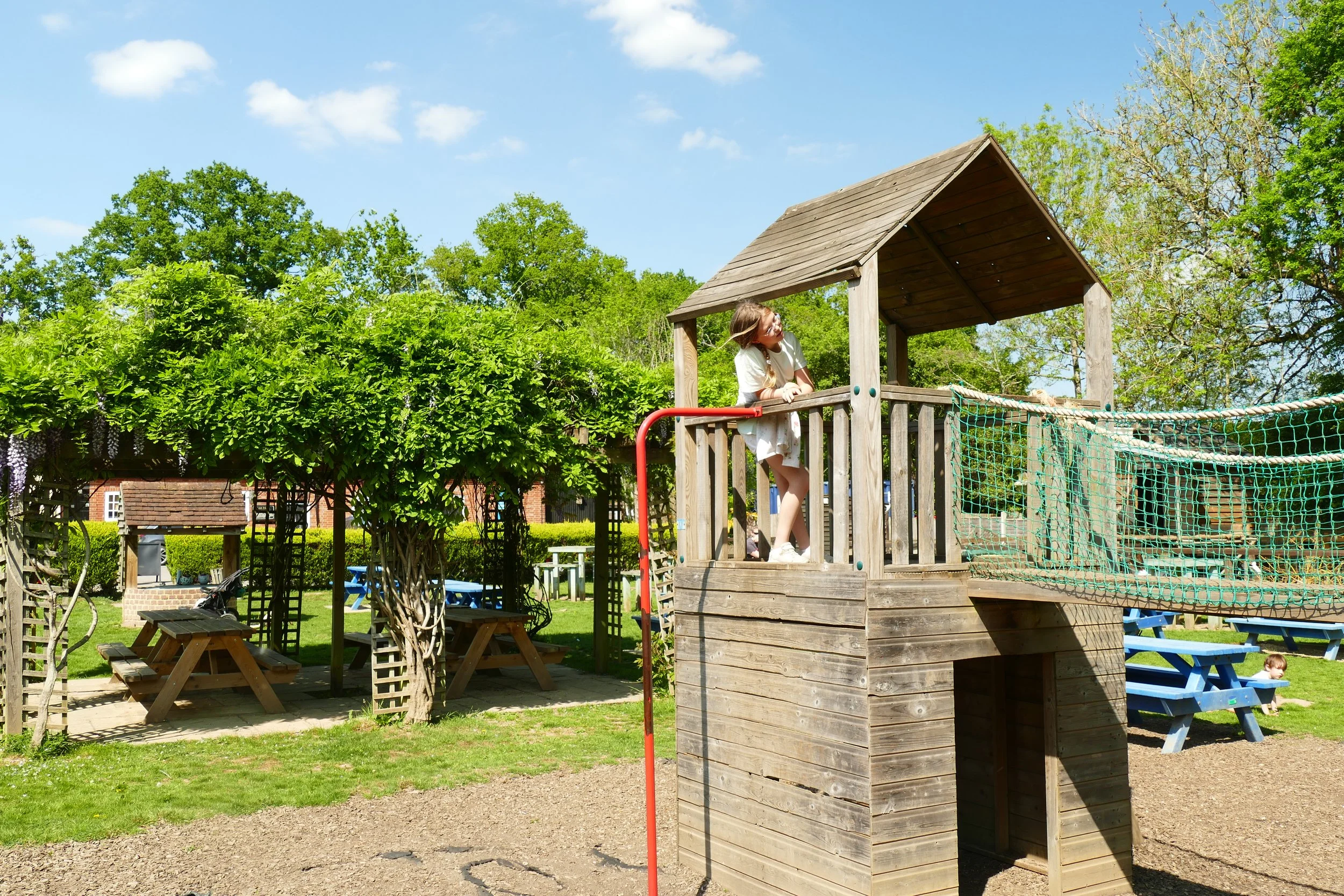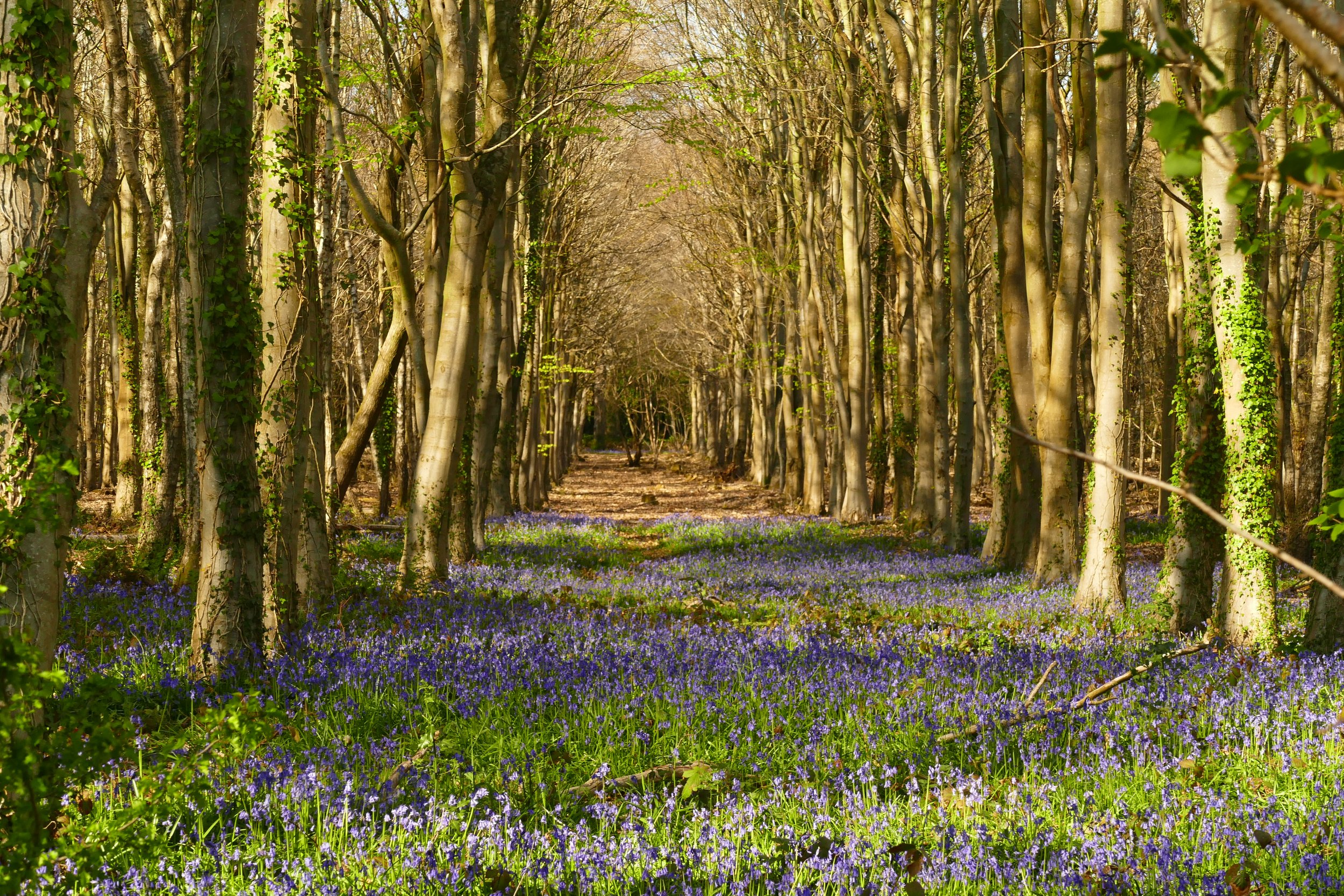Bishop’s Waltham
Children will enjoy exploring the ruins of the Bishop’s palace, visiting the park and feeding the ducks at the pond on this walk.
The ruins of Bishops Waltham Palace are free to explore
The Basics
Time: 65 mins
Distance: 3.7 km / 2.3 miles
Terrain: Flat disused railway path, fields that can be very muddy in winter, surfaced paths and pavements. One stile and two kissing gates.
Pushchairs: This loop is not suitable for pushchairs, although around the palace grounds and along the old railway is fine.
Dogs: Dogs are welcome but should be on leads in the palace.
Refreshments: Bishops Waltham centre is a stone’s throw from the start/end of the walk and you can find pubs, cafes, bakeries, tea-rooms and fish and chip shops. A favourite of ours is Josie’s for amazing breakfast/brunch or Hoxton Bakehouse for some delicious coffee and baked treats.
Toilets: The nearest public toilets are in Basingwell Street car park.
Public Transport: Stagecoach route 49 from Hedge End, 69 from Fareham to Winchester and 649 from Botley to Swanmore all stop at the Square, from where it is a short walk to the palace.
Parking: Free roadside parking along Station Road beside the entrance to the palace (Postcode: SO32 1DH - W3W - ///caressed.appeal.switch)
There are always lots of ducks and swans on the pond
This walk could easily be turned into a whole day out if you want to take your time exploring the well preserved ruins of Bishop’s Waltham Palace and wandering around the shops and eateries of the town. The walk itself takes you along a dismantled railway track, through farms and along a stream. As you approach the town once again, the route will pass an excellent children’s play area and finish beside a pond with plenty of hungry waterfowl to feed.
⚠️It is best to avoid this walk in the winter months as the fields can get extremely muddy.
The Route
Begin the walk by exploring the palace grounds for free, open daily 10am-4pm in winter and 10am-6pm in summer. They are cared for by English Heritage and they make an excellent place for kids to both learn some history inside the ruins and let off steam in the open spaces. There are a couple of picnic benches inside and it can be a popular place to enjoy some outdoor time.
To start the walk, go to the top of Station Road and turn left, heading towards the large roundabout. You will pass the pond on the opposite side of the road where swans and ducks gather to be fed. Turn left at the roundabout and look for the start of the path along the old railway line. It is marked by large red and white painted gates.
Follow the dismantled railway all the way to the gate at the end, where you should turn right onto an access lane.
Turn right again when you see a footpath marker signed The Pilgrim’s Way. The path follows a gravelled track and is bordered by electric fences on either side. Go over the little bridge at the bottom and then veer left with the path towards a farm. You will come to the metal gate that marks the entrance to River View Farm. You should go around this and continue along the footpath. Go left at a green gate as the path narrows beside a wooden fence. At a fork, go left and head through a metal kissing gate. Almost immediately, go through another kissing gate and enter a field.
There is a little wooden bridge here, which you shouldn’t cross. Instead, you should turn right and follow the slightly worn path running parallel to the stream. As you approach a hedge that divides two fields, you should continue straight and go through the large gap. Continue again, with the stream to your left until you reach the end of the field and a road ahead. Look to your right here for the stile.
Climb over the stile and walk up the perimeter of the next field. Exit the field through the gate at the top and then cross the entrance to Southside Farm.
The new housing will come into view and you should keep straight until you have crossed the entrance to Abbey Drive, a new access road to the development. The footpath continues through a wooden gate on the opposite side, and will head off to the right. The paths now have a new compacted surface. Stick with the same path until the path ahead appears to narrow considerably. Turn right here, sticking with the newly surfaced path.
Cross a small car park and then re-join the new path, passing the bowls club on your right. Just after the bowls club, the path will head down into a large green space and you should look out on your right for a children’s play area with a good variety of apparatus.
After the play area, re-join the path and cross the open space to enter the new housing development beyond. Follow the path through the houses until you spot the rails of some wide steps that will lead you back down onto the old railway track where you began your walk. Turn left and retrace your steps back to the palace. We would highly recommend finishing your walk with a trip to the town centre for refreshments or a picnic back at the palace.
As a member, you gain instant access to all 169 PDF files. Members also benefit from special members-only discounts at some of our favourite pit-stops.
Did you know?
Bishop’s Waltham Palace was one of the finest residences of the Bishops of Winchester. Built by Henry of Blois in the 12th century, it was a palace capable of housing the king and his court on a number of occasions. The palace was badly damaged in the Civil War (1642–9) and subsequently abandoned.
If you enjoyed this walk…
…try this one to Titchfield Abbey, where you can find more free to roam ruins.
We are passionate about keeping The Ambling Path as a free resource available to everyone, forever. If you have enjoyed using our walking guides, then please consider leaving us a donation. This will help to cover our costs as well as rewarding the considerable time and effort needed to maintain the site. Thank you.






































